In this article we're looking at membership developments over the previous year. How many new LIRs opened, and is this consistent with our earlier projections? How much longer will IPv4 last? And what about IPv6 uptake?
Our Membership is Growing (Younger)
We continued to see strong membership growth in 2017. A record 3,179 LIRs were activated, while 586 had their service agreement terminated. The total number of active LIRs increased from 15,008 on 1 January 2017 to 17,604 one year later. Looking at the projections we made back in April, 240 more LIRs joined than expected. Figure 1 below, which groups LIRs by the quarter they signed up in, shows that this is primarily due to exceptional growth in the fourth quarter of 2017. Almost 1,000 LIRs were activated in these last three months, not only an all-time high, but also well above what you would expect from extrapolating the trend seen in the last few years.
The high growth over the past few years also means the RIPE NCC membership as a whole is becoming younger. Almost 60% of active LIRs signed up in the last five years, after we reached the last /8.
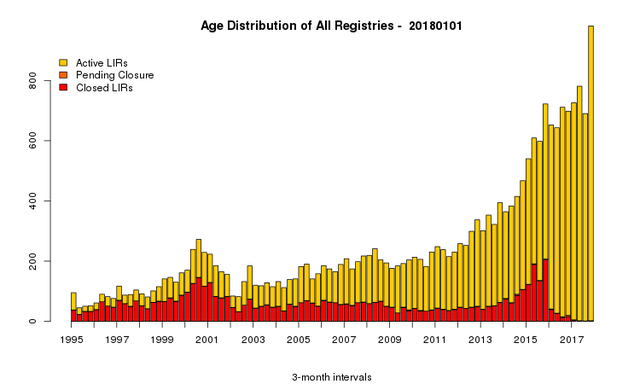
Figure 1: Number of new LIRs and their present state as a function of time.
Taking a closer look at the last few years, Figure 2 shows the evolution of the number of newly-activated LIRs on a monthly basis since 1 September 2012. While there is the occasional surge, for example in the summer and fall of 2015, the sharp increase in new LIRs in October 2017 is unprecedented. A break in a longer-term trend of this magnitude often points to changes in external factors that govern its growth. In this case, it may well have been policy proposal 2017-03, "Reducing Initial IPv4 Allocation, Aiming to Preserve a Minimum of IPv4 Space", which was announced to the Address Policy Working Group mailing list on 21 September 2017.
The proposal was withdrawn a month later, but if accepted it would have reduced the final allocation each LIR can receive from a /22 to a /24 – four times smaller. The community discussion of this policy might have created a run on the bank, with concerned organisations applying for (additional) LIR accounts to get a /22 before the policy changed. This seems to be borne out by the fact that 37% of the LIRs created in October 2017 were additional accounts, compared to 25% in the preceding four months and 28% in the following month.
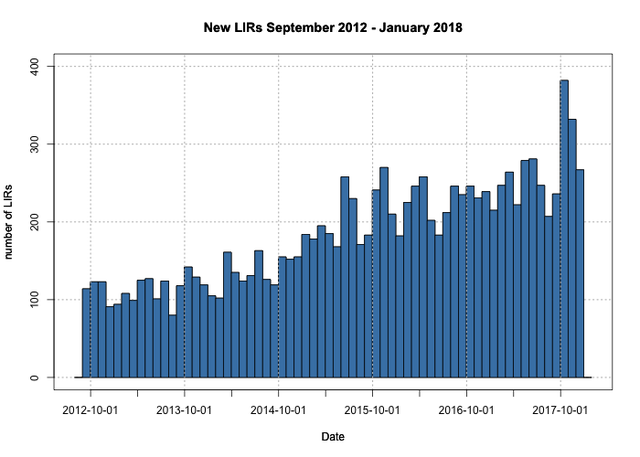
Figure 2: Activated LIRs per month since September 2012, when the RIPE NCC reached the last /8 of IPv4.
Counting new LIRs by which country the organisations are incorporated in, we see the highest growth in Germany and the United Kingdom, each with more than 300 new LIRs in 2017. The distribution in the RIPE NCC service region can be seen in Figure 3, a snapshot of an interactive, fully zoom-able map which is available online. The map shows that new LIRs have also been established in countries which fall outside our service region. These LIRs fall into two categories:
- Organisations that operate in the RIPE NCC service region but have their legal base elsewhere
- Organisations that operate internationally and opened an LIR to get IPv4 for use in the RIPE NCC service region
The Seychelles, which grew from 16 to 107 active LIRs, is an example of the first category, while the USA falls into the second.

Figure 3: Map of the new LIRs established in 2017 in Europe and neighbouring areas.
The table below lists the top ten countries for newly-established LIRs and their relative growth in 2017.
| Top 10 new LIRs | Top 10 relative growth | |||
| Country | LIRs | Country | Growth | |
| Germany | 329 | Seychelles | 631.25% | |
| United Kingdom | 315 | Hong Kong | 158.33% | |
| Spain | 258 | Moldova | 91.23% | |
| Russian Federation | 228 | Canada | 81.25% | |
| Netherlands | 172 | Syria | 54.35% | |
| France | 153 | Former Yugoslav Republic of Macedonia | 52.15% | |
| Italy | 123 | Georgia | 42.50% | |
| Poland | 112 | Ukraine | 40.78% | |
| Iran | 111 | Albania | 39.02% | |
| Ukraine | 111 | Belize | 36.36% |
Extrapolating membership growth, using the modeling techniques described in our article from April 2017, suggests that around 3,500 new LIRs will join in 2018 and around 650 will close, leaving a net growth of 2,850 LIRs for the year. However, as in 2017, deviations from the longer trend can make the number go up or down significantly. We estimate an uncertainty margin of 10%.
IPv4 to Run-out in Two to Three Years' Time
Obtaining an IPv4 allocation from the RIPE NCC continues to be a major reason for establishing new or additional LIRs. In January 2018 we see that 95% of LIRs that opened in 2017 have already received their final /22 allocation. For the remaining 5%, the application may be in progress, or they might have had another reason for opening an LIR. In total, 3,510 allocations were made from 185/8. This left 1,369,600 addresses (8% of the /8) marked as available or reserved on 1 January 2018.
Over the past few years, the allocation rate has slowly but steadily increased, as can be seen in Figure 4a. On a short timescale, linear growth is a good-enough approximation. For the last six months, this fit results in an average of 10,000 IP addresses allocated each day (the thin blue line in Figure 4a). Extrapolating this into the future shows that we will allocate the last blocks of 185/8 in about four months time, in May 2018.
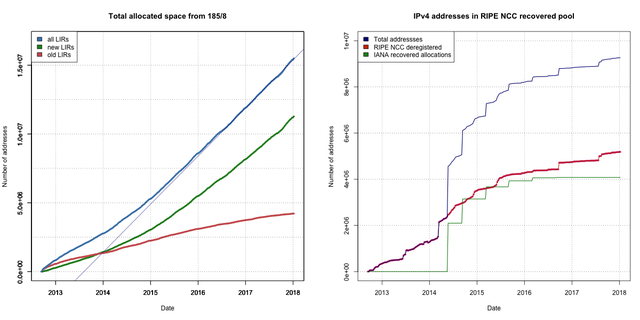
Figure 4: Growth of allocated space from 185/8 (left) and addresses in the recovered pool (right) in the last five years.
When 185/8 has been fully allocated, the RIPE NCC will begin allocating from a pool of IPv4 addresses that have been returned to the registry after they were allocated or assigned in the past. About four million of these were allocated by IANA from 2014-2017, according to the Global Policy for Post Exhaustion IPv4 Allocation Mechanisms, which redistributed the addresses from its recovered pool. A further five million addresses have been returned directly to, or de-registered by, the RIPE NCC.
At present rates, these nine million addresses will last until December 2020. More address space is likely to come back in the meantime, as LIRs close and resources are de-registered. This amount won't be very large, however. As the red line in Figure 4b shows, the average over the past year has been around 1,200 IPv4 addresses returned per day. This would postpone run-out by another three months.
Proportionally Less Members Have IPv6... and Maybe That's Okay
LIRs continued to request IPv6 from the RIPE NCC in 2017, but not at the same rate as IPv4. In total 1,822 PA allocations and 229 PI assignments were made. Of the LIRs established in 2017, around 50% had requested IPv6 addresses by 1 January 2018. This is in line with the trend that set in after the requirement to have an IPv6 allocation before requesting a final IPv4 allocation was dropped in March 2015. When we look at the IPv6 RIPEness scoring of LIRs in Figure 5, the years 2013 and 2014 (when IPv6 was still mandatory for a final IPv4 allocation) shows the lowest ratio of LIRs without IPv6. However, more than three years later, the LIRs from 2013/2014 also have the highest ratio with only 1-star IPv6 RIPEness; a sign that a large fraction of them only requested IPv6 because it was a precondition to get that last bit of IPv4. Following the policy change in March 2015, many new LIRs don't request an IPv6 allocation, and for those that do, only a fraction take the additional (relatively small) steps to achieve 4-star IPv6 RIPEness.
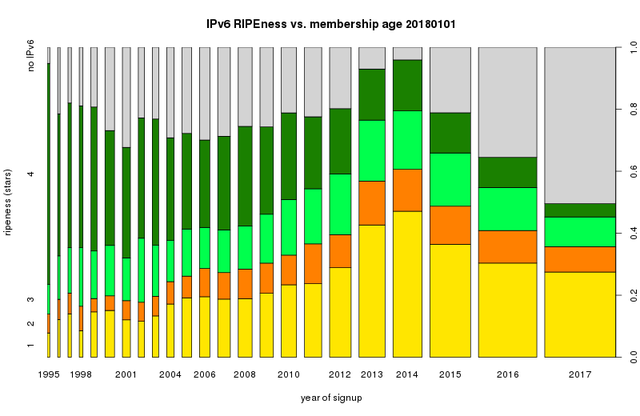
Figure 5: IPv6 RIPEness levels of LIRs vs the year they joined. The width of the bars represents the total number of LIRs that signed up in each year.
The lower scoring of younger LIRs should not be read as a disinterest in IPv6 among new operators in our service region. It is much more caused by a shift in nature of the RIPE NCC membership. Increasingly, enterprises and other companies are joining the RIPE NCC to get a last bit of IPv4 to use on their servers. For IPv6, these organisations might rely on their service provider which, unlike with strictly-rationed IPv4, will have no problem obtaining the necessary IPv6 addresses from the RIPE NCC. And organisations that open additional LIRs are unlikely to need an IPv6 allocation for each LIR -– which also contributes to a steadily increasing number of LIRs without IPv6.
Conclusion
The RIPE NCC membership is growing fast. We reached the 15,000 LIR milestone in the last days of 2016 and one year later we are already halfway to 20,000 LIRs. The primary reason for establishing new LIRs is to obtain a /22 allocation from the pool of IPv4 addresses still available at the RIPE NCC. At present rates, we expect the last /8 block allocated by IANA to be fully allocated within four months. The remaining addresses, which came from IANA's recovered pool and de-registrations by the RIPE NCC, are projected to last until the beginning of 2021 under the current growth rate.

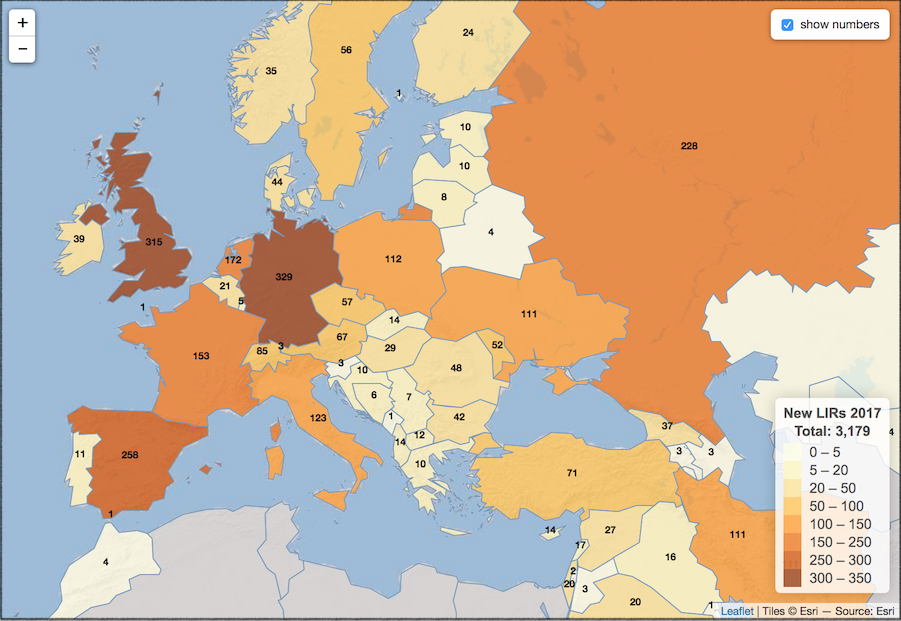

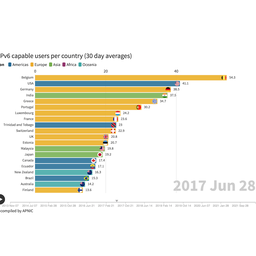
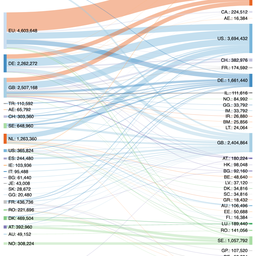
Comments 2
The comments section is closed for articles published more than a year ago. If you'd like to inform us of any issues, please contact us.
William Weber •
"Organisations that operate in the RIPE NCC service region but have their legal base elsewhere" I hope you do not actually believe this, because you have the wrong job then. Most of this IPs, clearly visible by scanning /22s assigned to SC|BZ|HK and then checking the /24 records below, end up being rented out, with outside RIPE region usage dominating. It is actually far more simple - US companies are hard to acquire, Belize is not liked by RIPE and UK is simple but VAT chargeable as are - by dumb Dutch laws, only Sweden and Poland have this as well - private persons outside the EU. Seychelles is non-EU, not questioned by RIPE in the slightest like Belize, VAT free, and fairly cheap to register if you speak French, i love it.
Charles •
Lol